




By Jane ehrhardt
Major League Baseball recently released a broad-based report on pitching injuries. In investigating the causes of a growing rise in injuries, the league surveyed experts who ran the gamut from orthopedic surgeons, bio-mechanists, and sports medicine physicians to pitching coaches, trainers, player agents, front office execs, and former MLB pitchers.
“I was very pleased with the report. They interviewed 200-plus people, and
the report might have had 200 different answers. But almost everybody agreed,” says Glenn Fleisig, PhD, the biomechanics research director with American Sports Medicine Institute in Birmingham. ASMI is the nonprofit sports medicine research and education institute created in 1987 by Andrews Sports Medicine founder James Andrews, MD.
“The report here does not prove what causes injuries,” says Fleisig, who has worked with MLB for over a decade as their
(CONTINUED ON PAGE 5)
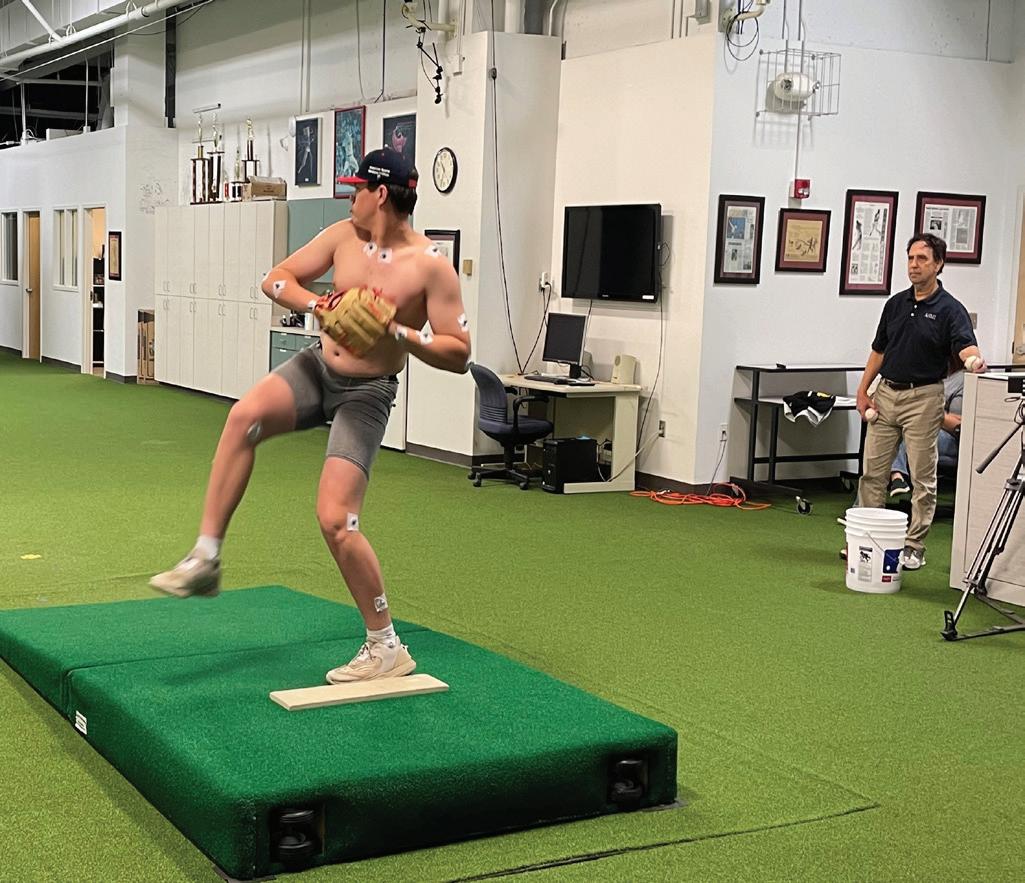
By anSley franco
In January, the Surgical Institute of Alabama (SIA) celebrated its five-year anniversary, having completed over 31,000 procedures since the doors opened. Over 23 specialists use the center for surgeries in orthopedics, urology, spine, general, and colorectal, along with pain management and neurosurgery.
Swaid N. Swaid, MD oversaw the construction of the 40,000 square foot, two-story Vestavia Medical Plaza, which houses SIA, at a cost of about $21 million with the goal of providing the most optimized outpatient healthcare possible.
With medical clinics located on the second floor, SIA expanded its first floor
footprint with the completion of two new operating rooms bring the total to six ORs, along with two procedure rooms, while expanding the SIA space from 15,000 square feet to 17,400.
“There additions are a significant investment in the health of our patients,” Swaid said.

The facilities aim to elevate patient care for total joint replacement and spine surgeries by showcasing the institute’s commitment to innovation, precision and comfort.
“At the core of the new operating rooms is an array of technology

designed to enhance surgical precision and patient outcomes,” said Halle Cloud, Director of Business Operations at SIA. “High-definition visualization systems and robotic-assisted tools enable surgeons to perform minimally invasive procedures with more accuracy. For patients, this means smaller incisions, less
postoperative pain and faster recovery times. Beyond its impact on individual patients, the expansion will benefit the wider community by eliminating the need for patients to travel long distances for specialized care.”
The new operating rooms increase
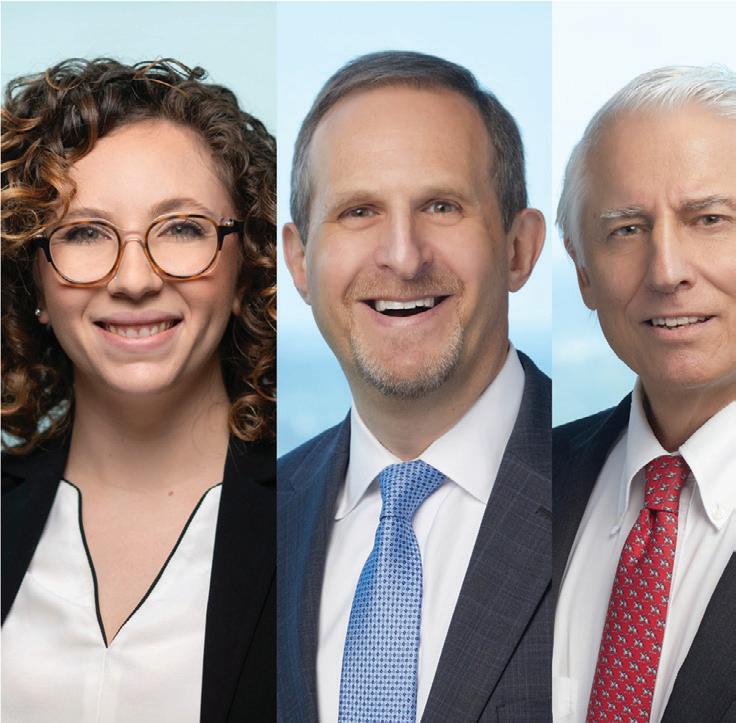


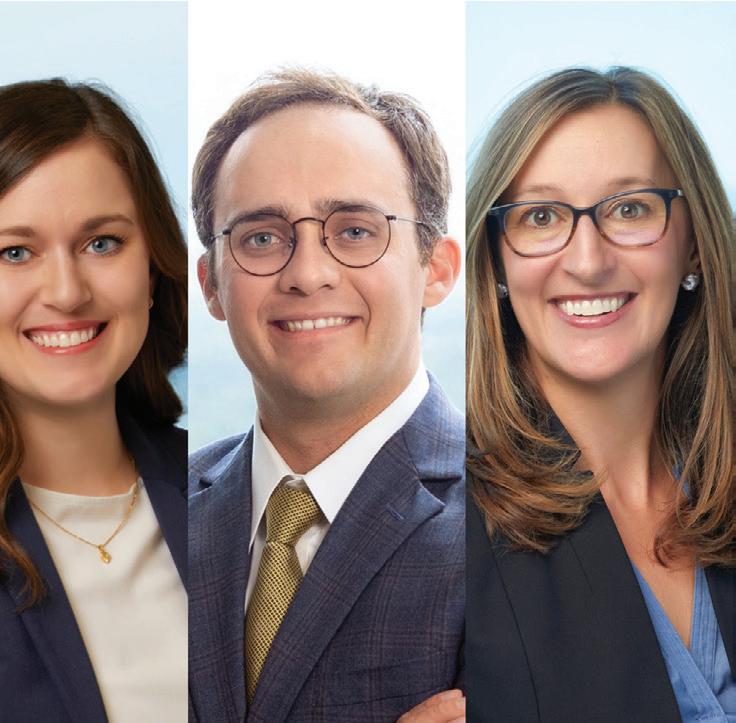


At the heart of one of the most highly regulated industries in the nation, health care facilities and providers face challenges that draw attention and resources away from their mission to provide quality patient care.
Burr & Forman’s health care team works alongside you to address and anticipate your needs by providing preventative guidance and pragmatic solutions, enabling you to focus on providing care and achieving healthy outcomes.
Alabama Health Care Team
Birmingham | Mobile | Montgomery
Jessie Bekker
Howard Bogard
Richard Brockman
Kelli Carpenter Fleming
Jim Hoover
Catherine “Cat” Kirkland
Garrett Lucey
Angie Cameron Smith

By Steve Spencer
Running a medical practice is time consuming. Doctors can be so busy with patient care and day-to-day operations that they don’t always have time to think about the future. A successful practice may outstrip its space at some point, and rather than have to look for a larger office on a shortened timeline, forcing hurried decisions, it helps to have a vision and plan for growth.
One physician who has successfully managed this is Corey Hartman, MD, the owner of Skin Wellness. After earning his medical degree from Tulane University, and completing his dermatology residency at the UAB Marnix E. Heersink School of Medicine, Hartman spent several years at a large dermatology practice before starting his own in 2009.
With the help of Rich Campbell of Veritas Medical Real Estate Advisors, Hartman decided to lease space in a building on Central Avenue in Homewood that Joe Larussa, MD had bought to open his allergy practice. Hartman started Skin Wellness with four employees and 2,000 feet of clinic space, and within a few years, the practice was bursting


at the seams, necessitating the need for more space. In making the original decision, Hartman had done two things than made this transition smoother: he chose to lease, rather than buy so as not to overextend himself when he was just starting out, and because he located in Homewood, one of the most sought after markets in the entire state, it was easy to sub-let his space.
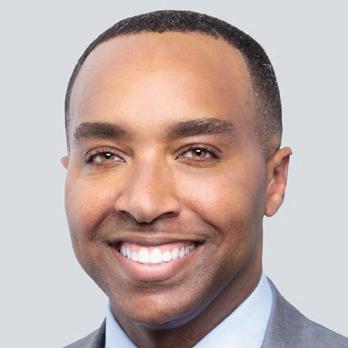
This time, he decided to buy. “I had always wanted to buy my practice property because ownership gives me control and allows me to build equity,” Hartman said. “But I had started with leasing because I had to get my feet wet first. So with Rich’s help, we began looking for properties. Nothing was officially for sale in the area. It never is. You have to decide what you want, and then approach people.
“And because Homewood is such a desirable market, you have to be able to bend a little bit. For example, if you have eight things on your priority list and
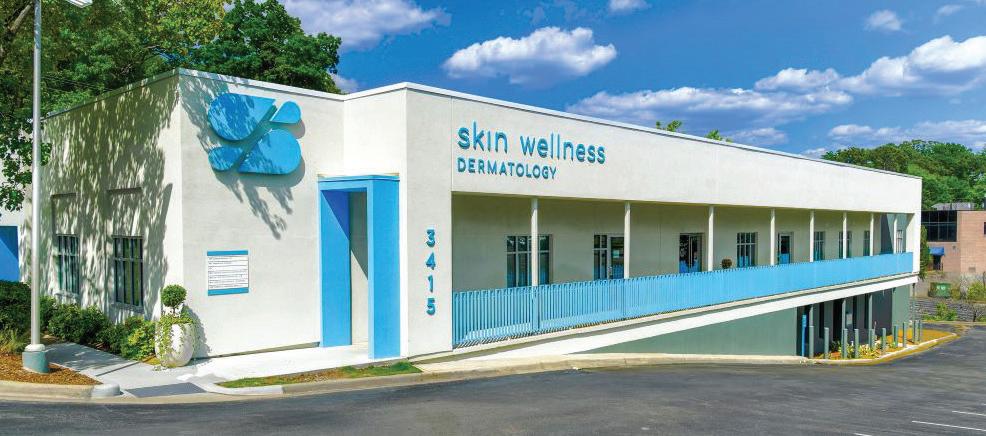
being in Homewood is one of them, you might have to drop three or four off in order to stay in there.”
Hartman ended up with a 5,000 square feet, over double his original leased space, with his practice as the single tenant. Knowing that this building might not be his last stop, he designed the layout so that it could work for other practice types.
Around this time, he opened a satellite office in Chelsea, leasing space two days a week from an OB/GYN Group. By 2022, the Chelsea space had become too small, and Hartman moved the satellite to the Crossroads development at the
corner of Highways 119 and 280. He is a part owner of the Crossroads complex.
“We made the original move to Chelsa because I had a nurse practitioner who lived out there,” Hartman said. “That paid off, but there’s also risk in those type arraignments. For example, we had a PA who wanted to branch out to Tuscaloosa. We had an opportunity to lease a space there, and two weeks before I was going to sign the lease, the PA left for another practice. That was my big reminder that I’m the one who has all the liability with this. If I would have signed that lease, that would have put me in a
(CONTINUED ON PAGE 4)

















































Why entrust your practice to a generalist when you could have an advisor that understands your specific needs and the challenges of the healthcare industry?


Warren Averett is uniquely equipped with experts who have dedicated their careers to helping medical practices thrive. We help physicians make smart personal and business decisions. We’re here for you.





the institute’s capacity to serve more patients. SIA anticipates performing approximately 1,500 additional surgeries annually. This can reduce patient wait times and improve access to advanced surgical procedures close to home.
Input from leading surgeons played a critical role in selecting technologies that not only enhance patient outcomes, but also integrate seamlessly into existing workflows. “The new technology will achieve a smoother recovery experience for patients, characterized by enhanced comfort levels and a significantly reduced risk of complications,” Swaid said. “These advancements position SIA as a leader in the outpatient surgery center sector, capable of performing increasingly complex procedures with safety and efficiency. The facility also serves as a training hub, equipping healthcare professionals with the skills to adopt new surgical techniques.”
]Infection prevention is another hallmark of the new design. The advanced airflow systems reduce airborne infections to antimicrobial surfaces and dedicated sterilization areas were added with the intention of creating a safer environment for patients.
The operating rooms are also designed with patient comfort in mind. They incorporate features such as ad-
continued from page #
vanced temperature control, calming aesthetics and comfortable positioning systems to minimize anxiety and physical discomfort. “High patient satisfaction fuels our optimism and validates our facility’s performance. Many patients express that they have never experienced such a positive healthcare encounter,” Swaid said.
Alabama State Senator J.T. Waggoner said, “No surgery center in the nation rivals the advanced technology or patient care offered through SIA. We are incredibly fortunate to have this valuable resource within our community.”
Cloud said the expansion aligns with the institute’s long-term vision of staying at the forefront of surgical innovation.
Looking ahead, Swaid sees the potential for even greater advancements in surgical technology. “The future holds the promise of expanding the scope of complex procedures safely performed in the Ambulatory Surgery setting,” he said. “SIA is investing in transformative changes to maintain our position as a leader in surgical care.”
“We’re combining state-of-the-art technology with patient-centered design and a commitment to innovation,” Cloud said. “SIA is ensuring that its community has access to the best possible surgical care today and in the future.”
position where I had to make some tough choices.”
In 2020, Hartman bought a 16,000 square foot building on Independence Drive with excellent visibility. Skin Wellness occupies 11,000 square feet. The rest is leased to several tenants. This gives Hartman control over growth because he can choose to let a tenant’s lease expire if he needs more space in the future. In the meantime, tenants are helping him pay the mortgage.
In choosing whether to buy or lease,
from page #
and if to buy, deciding on location, space, and price, Hartman looks at it like all the other decisions a physician-owner makes. “When you own a medical practice, even hiring a doctor or buying a device, you always wonder if it’s the right decision,” he said. “But in real estate, I have never looked back and thought that I didn’t make the right decision. I’ve built equity, and been able to better control my fate. It’s always been the right decision and I think it’s always been at the right time.”





Report, continued from page 1
injury research advisor. “But since people from different realms anecdotally think it’s the same things, then we feel pretty strong that these are the roots of the problem. It points us in the right direction for what needs to be fixed.”
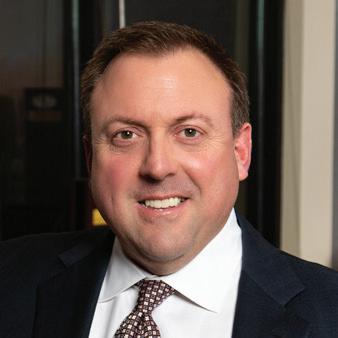
The sports current focus on maximum velocity pitches was consistently named as the primary cause of injuries. “It’s pretty widely held that throwing a max effort pitch is not a great idea in repetition, because you lose control, and you’re putting the ligament under a lot of stress,” Jeffrey Dugas, MD says.
Jeffrey Dugas, MD
A common and one of the most devastating injuries for pitchers relates to tearing the ulnar collateral ligament (UCL) on the medial side of the elbow. Surgeries to reconstruct that ligament, called a Tommy John surgery, have paralleled the increase in fastball velocities in the league.
“The reason that Major League Baseball commissioned this project was because they saw an uptick in UCL injuries in pitchers early in the season over the previous few years,” Dugas says. “They’re trying to understand it better to try to create strategies that decrease the risk.”
Spin is the other culprit cited by the experts in the report. This covers the combination of spin, velocity, and movement to make the ball weave, dip, and rise. “That means you’re using your muscles to turn the ball, and those muscles originate on the same part of the elbow as the ligament,” Dugas says. “The decrease in tack on the ball is also a source of more pitcher injuries. Years ago, they decreased the height of the seams in order to advantage hitters, and pitchers were less able to generate spin. So pitchers gripped harder to compensate for less tack, leading to more injuries.”
Fleisig feels differently about the grip’s connection to injuries. “When you grip the ball harder, it makes more tension in your forearm and, in my opinion, that actually protects the elbow ligament
by reducing the load on the ligament,” he says. “However, as those forearm muscles fatigue later in the game from maximum effort, the UCL becomes vulnerable again.”
That max effort in every pitch was also highlighted in the report as a cause of injuries.
“I’ve spoken to a lot of the greatest pitchers of our times, Hall of Famers,” Fleisig says. “And when I spoke to them ten years ago, they all said that they alter their velocities, throwing some fastballs harder than some others; the same with curveballs. These days, though, pitchers never let up.”
Biomechanics hold the potential for new solutions for pitchers. To that end, Major League Baseball has been making large investments into assessing players’ movements. For about the past five years, they’ve been installing biomechanic cameras in every stadium and most of the minor league ones as well. “If you’re going to throw hard, you might as well throw with proper mechanics. So all the teams are doing that,” Fleisig says.
The problem is not only hiring people on each team to interpret the data, like bio-mechanists, but then also have the expertise on hand to convert the data into sound training advice for coaches, trainers, and pitchers.
“Getting the best mechanics will help you,” Fleisig says. “But again, our research has shown that even with the best mechanics, if you’re throwing every pitch as hard as possible, you are stressing out your elbow.
“For years the scientific message to players and coaches to voluntarily do what’s best for themselves hasn’t worked so rule changes may be needed. Those things still have to be worked out. But baseball has made changes when needed like adjusting age-old rules to shorten and liven up games, including adding a pitcher clock. So I’m optimistic they’ll make the safety changes.”


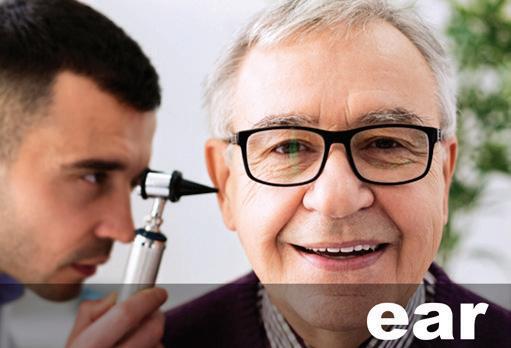


If you suffer from allergies or other ear, nose, throat or hearing problems, we don’t want you to treat your healthcare lightly or ignore symptoms that could lead to more serious issues. Call us now for a complete evaluation with one of our 16 board certified physicians, 5 highly trained and licensed PAs, or 16 clinical audiologists — all available to serve your needs at any of our 10 locations.

By Shannon Britton hartSfield and Beth neal pitman
The U.S. Department of Health and Human Services (HHS) has issued a Notice of Proposed Rulemaking (NPRM) that strengthens the Health Insurance Portability and Accountability Act (HIPAA) Security Rule and, if finalized, will have a significant impact on the healthcare sector.
HHS observed that healthcare breaches can lead to harms far greater than those of breaches in other business sectors. In the announcement regarding the rules, HHS Deputy Secretary Andrea Palm indicated that the changes are designed in part to strengthen cybersecurity and that “[t]hese attacks endanger patients by exposing vulnerabilities in our health care system, degrading patient trust, disrupting patient care, diverting patients, and delaying medical procedures.”
HHS finalized the original Security Rule over two decades ago and has not updated it substantively in more than 10 years. The proposed sweeping changes to the Security Rule address massive leaps in technology and cybersecurity risk over
that time period.
HHS indicated that the proposed Security Rule changes are designed to address:
• changes in the healthcare environment and technology
• significant increases in cyberattacks and data breaches
• deficiencies that the HHS Office for Civil Rights (OCR), which enforces HIPAA, has observed when investigating regulated entities’ compliance with the Security Rule
• cybersecurity best practices, methodologies, guidelines, processes and procedures
• court decisions affecting Security Rule enforcement
Protected health information (PHI), unlike an individual’s bank account numbers or passwords, is immutable. Therefore, “PHI can continue to be exploited throughout an individual’s lifetime, making PHI likely to be far more valuable than an individual’s credit card information,” HHS indicated. Harms that could arise from a PHI breach or
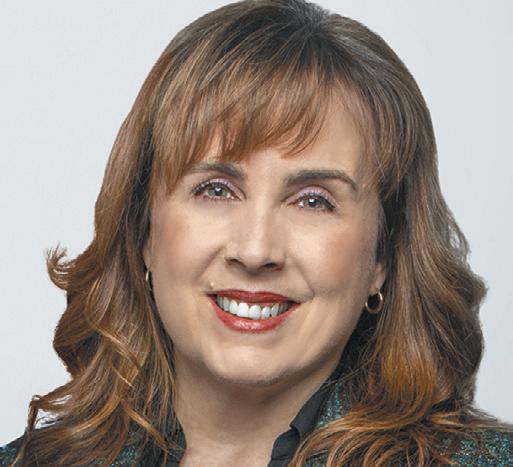
security incident, according to HHS, include the “potential to adversely affect an individual’s health or quality of life, or even to cost an individual their life.”
For example, lives and health may be at risk if a security incident interferes with a medical device’s operations or the administrative or clinical operations of a healthcare provider. Rural health is particularly vulnerable and can result in closures and loss of necessary services for remote communities. Electronic medical records are ubiquitous, and healthcare delivery often requires electronic data storage and transmission.
The number of PHI breaches re-

ported to HHS had a 100 percent increase and the number of people affected by such breaches had a 950 percent increase from 2018 to 2023. Accordingly, to help mitigate these risks, HHS is proposing sweeping changes to the Security Rule intended to address the leaps in technology and cybersecurity risk that have occurred over the past decade.
The Security Rule applies only to electronic protected health information (ePHI) held by “covered entities” and “business associates” (regulated entities). HHS noted that “[a]lmost every stage of modern health care relies on stable and


Our team of 15 board-certified physicians specializes in minimally invasive procedures to capture the latest in treatments with the most e ective outcomes for each patient.
WE ARE LEADERS SPECIALIZING IN:
• Chest pain & hypertension
• Peripheral Artery Disease
• Cutting-edge therapies
• Watchman & treatment of AFIB
• Venous disease & procedures
• Interventional cardiology including TVAR, TCAR, and EVAR procedures























































By Steve Spencer
It’s not news that there is a physician shortage across the country, particularly in primary care, and Alabama is no exception. The Alabama Office of Healthcare Workforce estimated that our state would need an additional 250 primary care physicians (PCP) in 2024 to fill its needs. The lack of providers is especially acute in the rural communities.
With that in mind, the UAB Heersink School of Medicine has created the Project to Recruit Rural Medical Students, a program that is based on the pipeline concept, which is directed toward students who could be good candidates to practice in a rural area.
“Medical school graduates who have grown up in a city don’t tend to consider practicing in a small town,” said David Bramm, MD, Director of Rural Medicine at the UAB Heersink School of Medicine. “So we focus on recruiting students who are from rural communities. If they already know and enjoy that kind of life, the odds that they will return there are better.”
Bramm’s department has several
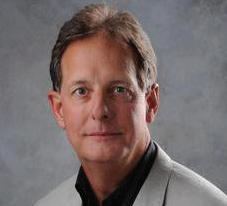
with the College of Community Health Sciences Rural Pre-Medical Internship program. This is a seven-week summer program for pre-medical undergraduate students interested in rural primary care. The program is conducted at both the Tuscaloosa Regional Campus and the Huntsville Regional Medical Campus with 12 slots available at each site, and campus housing is provided. In order to participate, students must have four semesters of college with a GPA of 3.2 or higher, and be an Alabama resident.
“We want to identify college students who might be interested and give them a sense of what a career in rural

medicine is like. The summer internship program introduces them to basic skills,” Bramm said. “They’ll do clinical shadowing where they learn to take a history, use a stethoscope to listen to the heart and lungs, take a blood pressure and look for common anomalies on a basic x-ray, EKG and other medical equipment. They learn about the social determinates of disease, and work with medical students and residents.”
In the last two weeks of the program, the students get to shadow a primary care physician. “After they’ve learned some basic skills, we pair them up with a board
look for partners who are good mentors and try to place students with a medical practice near their home. They get a real world sense of what it’s like working as a doctor in a small town.
“Here in Huntsville, we tend to see students from or interested in working in north or eastern Alabama. We also see some students who grew up in rural areas of Tennessee. At the Tuscaloosa campus, students tend to be more interested in west or south Alabama.”
The students receive a stipend of $2000 at the completion of the summer internship, which is meant to help defray

tom WatSon, md on the current State of Kidney diSeaSe
After earning his medical degree at Emory University, Tom Watson, MD continued his training in Internal Medicine and Nephrology at New York-Presbyterian Hospital of Cornell University. In 2008, he joined Nephrology Associates in Birmingham.
What is the state of kidney disease today?
Approximately eight to ten percent of people in the world have some level of kidney disease. It’s a bigger number than most people would think. It’s so prevalent that there is at least one dialysis clinic in almost every county in Alabama. In many cases it’s a mild problem, but in some, it can be very significant. And even in younger people, the main problem we see is that some percentage of that large number of people will get worse with time and develop kidney failure. There are approximately 600,000 to 700,000 people in the United States suffering with kidney failure, and that requires a transplant or dialysis.
What are the main causes of kidney disease?
The major cause is diabetes. About 30 percent of people with type 2 diabe-
tes will develop kidney disease. Number two would be high blood pressure, and then we get into some combination of autoimmune diseases like lupus.
There are also some genetic diseases. The most common is an inherited form of polycystic kidney disease where the kidneys are replaced by cysts, just bags of fluid. One other genetic cause that has been recently discovered is a mutation of the Apolipoprotein A1 gene, which is seen mostly in people of West African descent. And that confers as a much as a tenfold higher risk of kidney failure compared to the general population. It’s just terrible. And we’re hoping for some treatments to come down the path.

off work to get them to an appointment. So it’s extremely burdensome.
10 to 15 percent of patients will choose home dialysis. In this case, a nephrologist will help educate and support them, and train them to provide their own care. There’s a learning process, but it’s not so hard that a patient can’t be trained to do it on his or her own, and that provides them with much more freedom and they feel better.
What is the current state of kidney transplants?
in Washington about supporting donors during that time so it wouldn’t be a financial hurdle.
There are also donor chains. An example would be a husband who wants to donate a kidney to his wife, but he has type B blood, and wife has type A, so he can’t donate. But out there, there’s another somebody with type A. So there’s a donor registry, several different ones throughout the nation and statewide that transplant centers use to match donors with recipients.
What are the treatment options for kidney disease?
Most people are treated at dialysis centers. They have to go 13 times a month, and they may have other doctor appointments, as well. When someone has to give up half a day, three days a week for the treatments, that person usually can’t work. And then their children or family members have to take a day
There’s a major waiting list for kidney transplants. In Alabama, the wait can be three to five years, depending on your blood type and other things. Another way is to find someone who is willing to donate one of his kidneys to you. This could be a family member, but it doesn’t have to be. For example, I had a patient who was willing to ask anybody. A man came to his house to fix his washing machine, and the washing machine repairman ended up giving him a kidney.
The donor, of course, will go through the stress of surgery and miss a month or more of work. Now there’s discussion
Some of the more exciting things recently are the pig transplants, xenotransplantation. It’s showing the promise of what it could look like to have an almost unlimited supply of organs to be able to transplant. Now that’s well down the road. But they’ve made some significant strides in proving that a pig kidney that’s been genetically engineered to be transplanted into a human could survive the first two or three days at least. So it’s a start.
Have there been any new medicines for kidney disease?
In the 1990s, ACE inhibitors and angiotensin receptor blockers became standard therapy for patients with kidney disease. And in the last five to 10 years, they’ve developed some new medications,
(CONTINUED ON PAGE 9)


Security Rule, continued from page 6 secure computer and network technologies,” and updates are needed to address cybersecurity, which “is a concern that touches nearly every facet of modern health care.”
HHS noted that “[a]lmost every stage of modern health care relies on stable and secure computer and network technologies,” and updates are needed to address cybersecurity, which “is a concern that touches nearly every facet of modern health care.” HHS does not believe that current resources, such as the National Institute of Standards and Technology’s (NIST) cybersecurity framework, provide sufficient instruction to help regulated entities comply with the Security Rule.
The public is invited to submit comments on all aspects of the NPRM until March 7, 2025 – 60 days after the official
publication in the Federal Register on Jan. 6, 2025. Even if the newly installed Trump Administration delays finalizing the regulations or makes significant changes, the proposed revisions offer insight into steps that healthcare entities may take to reduce the risk of a data breach and the associated costs.
If finalized as is, the NPRM will mean big changes for covered entities and business associates, although many of the proposed provisions reflect activities that compliant companies should already be doing. There is also potential regulatory ambiguity. Regulated entities have a limited time to submit comments requesting clarification.
continued from page 7
the cost of food and transportation. If they do well in the summer internship, it’s a plus for getting accepted into medical school.
Students who have graduated, been accepted to the UAB Heersink School of Medicine, and want to practice in a smaller town, can choose to go through the Rural Medicine Program, which is a five-year study that starts with a year of pre-matriculation coursework at the post-baccalaureate level in the College of Sciences and Mathematics at Auburn University, followed by four years of medical school. Students do their pre-clinical courses at the UAB Heersink Medical School in Birmingham, followed clinical rotations at the Huntsville Regional Medical Campus with special courses and rotations in rural medicine.
“Not every student makes it through medical school and back to their hometown,” Bramm said. “Some may fall in love with another specialty along the way, or marry someone who wants to live somewhere else. However, our graduation numbers are higher than 90 percent of the pipeline programs across the country that release their data. Between 52 and 56 percent of the students who start the program end up in rural Alabama. That’s one of the best rates in the country.
“Every doctor we send out to help underserved patients is a doctor we might not have had without the support of the pipeline program. It’s someone who will make a real difference in the lives and health of so many people working in a career where the need is so great.”
continued from page 8
especially for diabetics, but also for anybody with kidney disease, especially those who have any protein in their urine. These are SGLT2 inhibitors. Farziga and Jardiance are the two most commonly used ones. They’ve shown incredible improvements in the prevention or worsening of kidney disease, but also preventing heart related complications as well as hospitalizations and death.
I understand there are new payment models?
Yes. So kidney disease patients are some of the most expensive to the medical system because in addition to the cost of dialysis, these patients have higher hospitalization rates, an increased rate of heart disease, along with higher rates of cancer


and need for chemotherapy. So Medicare and private insurers are motivated to improve matters for these patients in ways that will also result in lower costs to the healthcare system. The result is what some call “value-based care.” We prefer to call it “physician-driven patient-centered care.”
So our practice has partnered with Evergreen Nephrology to help patients with better healthcare education, disease prevention, care coordination, dietary education, and general support in an effort to prevent kidney disease from worsening, to prevent hospitalizations, to increase planning and uptake of kidney transplants, and when dialysis is necessary, to focus on home therapies that are often better for quality of life.






At Children’s of Alabama, kids are the center of our world and our mission is to provide the very best care available to every child. It’s why we are here.
DOWNTOWN MAIN CAMPUS 1600 7TH AVENUE SOUTH BIRMINGHAM, AL 35233
By JeSSie l. BeKKer
The Alabama Board of Medical Examiners (“Board”) has proposed sweeping changes to the regulations guiding office-based surgeries in Alabama that, if passed, would create more stringent requirements with respect to procedures performed under anesthesia in physician offices across the state.
The proposed rules would repeal and replace existing regulations that were promulgated in 2003 as a joint effort of the Board and “an ad hoc committee representing various medical and surgical specialties,” according to the preamble to the current rule. Notably, the requirements for in-office use of anesthesia use permissive language, establishing a framework of rules that physicians “should” follow when administering anesthesia to patients in physician office settings. By contrast, the proposed rules set firm prerequisites for performing office-based surgeries by the use of stricter language (changing “should” to “shall”). Effectively, the shift from the current permissive language to
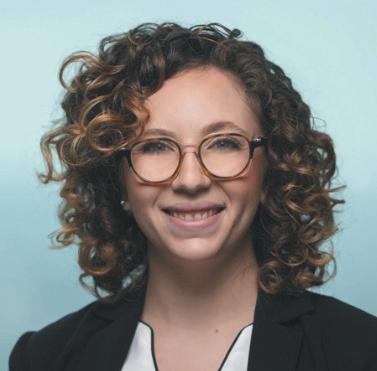
the proposed more stringent language might bolster the Board’s authority to penalize noncompliance with the rules. If adopted as proposed, compliance with the new rules will be required by January 1, 2026. Summarized below are five key changes that would impact Alabama physicians performing office-based surgeries:
In a major shift from the current


• Patients are scheduled within 24 hours.

• Patients are seen in clinic within 2-4 weeks of referral.
• We keep you informed about the patient’s treatment plan.
• We make sure the loop is closed on your referral.



rules, the proposed rules would require physician offices to obtain accreditation or certification by an entity approved by the Board if the office is the site of any surgical procedures requiring registration. Under the proposed rules, registration requirements are expanded from current requirements to include physician offices in which: (a) a surgery is performed under moderate sedation, deep sedation or general anesthesia, (b) liposuction is performed using infiltration methods, (c) procedures are performed using propofol (an anesthetic), (d) a procedure is performed involving a major upper or lower extremity nerve block, or (e) MRI and other imaging studies are performed involving moderate sedation, deep sedation or general anesthesia. While physician offices would have until January 1, 2026 to comply with the rules, physician offices subject to the new accreditation requirements would not need to be immediately compliant. Instead, the proposal allows physician practices that have already submitted accreditation applications to continue to perform
office-based surgeries, provided that they meet accreditation standards and obtain accreditation within one year of performing the first procedure under the new rules. The proposal does not list which accreditation agencies would satisfy the requirement, indicating that the Board may release those details in future guidance documents.
Under the proposed rules, every physician performing office-based surgeries and procedures is required to have completed training specific in the surgeries and procedures the physician performs. The rule specifies the criteria the Board would use to evaluate training that meets the requirement, offering that completion of an accredited residency or fellowship in the related surgery or procedure, or specialty board certification, would be sufficient. Further, physicians who propose to provide a new office-based surgical procedure would be required to conduct specific training for all person-




Our HERO is the ambitious Practice Manager whose life is wrapped up in the success of the business – income, mortgage, retirement, even the kids’ college. They have a sense of humor but are constantly thinking about ways to improve their business, maximize productivity, and MANAGE RISK. They’re passionate about their business and take it personally when a competitor, hacker, or employee threatens their mission to improve the world.
OUR ENEMY:





Apathetic or complacent US businesses who are willing to accept UNLIMITED RISK by ignoring today’s threats. Business owners who think, “it won’t ever happen to me.” Foreign Governments seeking footholds in the US or leverage. Cybercriminals who believe that all Americans are rich and therefore justified targets. Global crime syndicates who employ thousands in an Enterprise organizational structure. IT and Cybersecurity companies who take advantage of unwitting customers with Projects and Hourly Billing. The Cybersecurity industry as a whole, which has bored and confused the entire US public into a state of wanton vulnerability, while the hackers get better every day.
• Taste our exclusive, branded beer (limited)









www.sipoasis.com Stop by our booth (or call us) to hear the details. on our YouTube channel, then subscribe to stay current. Feel free to call, if it’s easier to hear about the changes. VIEW






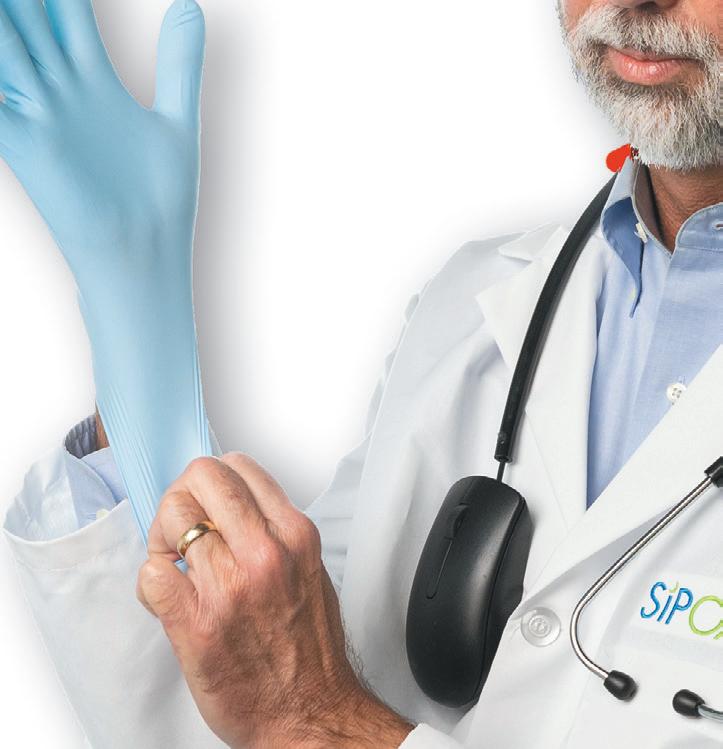
Practice Managers who are mature enough to understand that THEY OWN ALL THEIR COMPANY’S RISK, and who are willing to have routine, honest, and candid discussions about CYBER RISK MANAGEMENT and CYBERSECURITY / REGULATORY COMPLIANCE. They understand that by getting buttoned up and taking RISK seriously, they can maximize productivity, retire earlier, and send the kids to college debt-free. We are for HAVING FUN while making clients SAFER FROM CYBERCRIME. You know, CybertechnoLOLogy!


• Our new book on safeguarding your practice
The solo “IT Guy” who doesn’t have the time, desire, or skills to keep up with ever-changing threats and subsequent countermeasures. Technology companies that baffle their customers into spending money on things they don’t need. MIND-NUMBING CYBERSECURITY TRAINING AND CONTENT that BORES AND CONFUSES NORMAL PEOPLE INTO NEVER GETTING ANY SAFER FROM CYBERCRIME. ANTIcybertechnoLOLogy.








By Brian m. cloud, Jd, mBa
How can I streamline billing and collection efforts so my medical practice is profitable? Medical practices need to be concerned with the bottom-line, and therefore need to make sure their business processes are streamlined. Three of the most effective processes to implement, whether the practice is established or new, are to develop a credit application in the patient forms, clearly communicate the payment terms upfront, and utilize a collection agency or attorney to reduce unpaid account receivables.
For an established medical practice, this could look like implementing new forms that focus on gathering information about a patient’s financial standing through credit applications or hiring an attorney or collection agency to help them with their collection efforts. A new practice can reduce the need for process improvements later by putting these same systems in place before it opens. A medical practice that has these systems in place will see a higher return of profit since they will have more legal leverage and control due to proper documentation
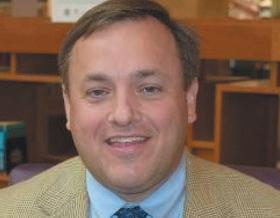
and representation. While medical practices need to concentrate their efforts on offering quality patient care, it is important that, like any business, they prioritize proper business controls.
From patient intake to medical records, medical practices deal with a host of forms that inform them on how to proceed with patient care and billing. One of the simple changes a practice can make to its billing process is developing a credit application as part of the patient intake forms. Within a credit application, the practice can gather critical patient infor-


mation including name, address, phone number of applicants, responsible party, place of employment, bank account information, and social security number. The credit application should also contain clauses that allow the practice to add interest and collection costs/attorney fees to the amount owed by the patient. The credit application acts as another tool that creates leverage over the patient should it become necessary to collect on deliquiate medical bills in the future. While this credit application cannot be applied to patients who are already receiving care, a practice can create and implement this form with future patients. A medical practice should consider using legal counsel to review its business forms, like the credit application, to ensure they are drafted effectively and with the appropriate legal verbiage.
Communicating the medical practice’s payment terms in intake forms can save the practice from unnecessary billing struggles. Key elements to include are clear payment expectations for the pa-


tient’s service including billing due dates and any potential late fees the patient could incur. From the credit application’s clauses, the patient will also be informed ahead of time of additional interest and collection costs/attorney fees they could incur upon past due payment of their bill.
In a setting where a patient might have bills from separate doctors or specialists, the patient should be made aware of each payment expectation, especially if they vary between doctors. For example, in a situation where a patient requires surgery that needs anesthesia, they will receive care from the surgeon as well as an anesthesiologist. Both doctors will bill for their services, and the patient should be aware of the payment expectations for both sets of care upfront. Often, patients will experience delays in receiving invoices from the practice due to insurance processing, but if the delay is communicated in the forms, this will ease the burden on the practice.
In addition to clear payment terms, offering discounts or other early payment incentives can aid in on-time billing that benefits both the practice and the client.

























Alabama Rep. Terri Collins, R-Decatur, has reintroduced a bill that would establish a tax credit program that could provide up to $30 million a year to the state’s struggling rural hospitals.
House Bill 86 would establish the Rural Hospital Investment Program, which would provide dollar-to-dollar tax credits for individuals and corporations that make donations to rural hospitals. If established, the tax credit program would have an annual statewide cap of $20 million for 2026, $25 million for 2027, and $30 million for 2028 and beyond.
19 of the 52 rural hospitals in Alabama are at an immediate risk of clos-

ing according the Center for Healthcare Quality and Payment Reform.
“The closure of Thomasville Re-


gional Medical Center is what encouraged me to refile the bill early because this could have prevented that,” Collins said. “Before any others close, I would like for us to throw them a lifeline, so to speak.”
Annual tax credit recipient limits under the program would be capped at $15,000 for individuals, $450,000 for pass-through entities, and $500,000 for corporations. Hospitals would also be limited in the amount of donations that could receive under the program annually, which would be capped at $750,000 for 2026 and $1.25 million for 2028 and beyond. To be eligible for the program,
hospitals must produce a five-year plan for financial sustainability, be located in a rural county and accept Medicaid and Medicare patients.
Collins introduced a similar bill last year that failed to make it out of a House committee. Her new version of the bill includes several changes that both reduce and increase its scope. The annual statewide cap, for instance, is reduced significantly under the new version of the bill, maxing out at $30 million compared to the former’s $80 million. The max annual cap for individual hospitals was also reduced from $2 million to $1.25 million.
Where Collins’ new version expands the bill’s scope is what sort of tax credits individuals and corporations may receive. Under the previous version, the tax credit would only apply to an individual or corporation’s state income tax liability, whereas HB86 expands the credit to apply to excise tax, utility tax and insurance premium tax liabilities.
Beyond the reduced annual statewide cap, Collins said that the recent closure of Thomasville Regional Medical Center, along with the dozens of other rural hospitals under threat of closure gave her hope that the bill would be received favorably this year.
“We worked on the language so the actual mechanics of the bill should be spelled out in the policy,” she said. “I also think because we’ve had one hospital close this fall, it’s a lot more important, and several others are really close.”
The bill has been assigned to the House Ways and Means Education Committee, and will be taken up during the 2025 session.







Approximately 8.6 percent of Alabama’s population, or around 421,000 people, lack health insurance, often leading to hospitals eating the cost of patients who can’t pay. The percentage of uninsured Alabamians in rural areas is even greater, according to Ted Hosp, vice president of government relations for BlueCross BlueShield of Alabama, who said one in five patients who walk into a rural hospital are uninsured.






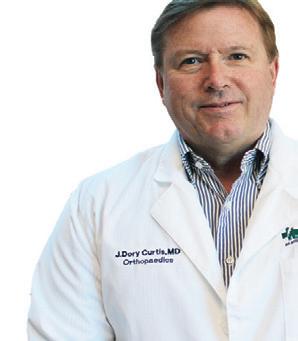








































By Jane ehrhardt
During his 13 years working in the supply chain side of healthcare, Jim Ferch got a clear view of the needless complexity of tracking and billing for items, especially in hospitals. “The biggest pain points we had as clinicians, finance and supply chain managers, and vendor reps was at the end of every implant case,” he says.
Each implant case generally moves through multiple touchpoints starting in the OR through billing in order to document, chart, and approve a single case. This was a major frustration for Ferch.
So about 18 months ago, he launched the Simplify OR platform. During that time, the Specialty Orthopedic Group of Mississippi has successfully documented $10.2 million of implant cases through the Simplify OR platform. “The contract savings in this past year has been about $84,000,” Ferch says. The staff time saved measured at least 1,244 hours for anything from vendor contract compliance and rep communications to the greatest time-saver of 395 hours from not having to search for purchase order (PO) item numbers.

The implant case management platform is tailored for hospitals and surgery centers to ensure vendor contract compliance. It also auto fills in data on all the required forms for billing, tracking, and charting. “Simplify OR addresses the frustrations of redundant and time-consuming paperwork by digitizing the entire implant tracking process,” Ferch says.
Anyone who needs to approve or review aspects of what is normally a cumbersome paper trail, can now view, approve, reject, and input data on their

Apple phone via the Simplify OR app or on the web application. Vendor reps can scan in the implant information rather than manually inputting it on sheets of paper, and leaving the paperwork behind.
“There’s no other software out there that can do what my software does,” Ferch says. “And the reason for that is because I built it while I was a supply chain director for a healthcare system and I knew all the pain points.”
Usually, the paper trail travels through 23 touch points between three departments and five people who all have to acknowledge that piece of paper. All of those are a manual workflow carried out every time to ensure the case is billed to the patient correctly, charted to the patient, updates the materials management system, and produces the purchase order at the current contract pricing.
“I’ve developed code to automate all of that on the web app,” Ferch says.
“So with Simplify OR, the vendor rep in the OR records the consumption of implanted devices and hardware into the app. Once the circulating nurse approves that list, the app updates all five key data points: charge master, item master, patient chart, patient billing, and the PO
file. That’s all the lift that has to be done from that point forward for the hospital to correctly charge that patient and issue a PO based on the current contract pricing to that distributor for those implants.”
When Ferch first created the platform, he did a case study at a hospital. The app uncovered an overpayment of roughly $80 per implant case because they were paying the submitted invoice from the vendor, but that invoice was not necessarily the current contract pricing. They were also underbilling implant cases an average of $240 because if the charge nurses didn’t have the charge number in the charge master file, they would just click on something close.
“That happens every day everywhere,” Ferch says. Automating the entire process meant they captured on average $320 in billable charges. For a hospital that performs maybe 6,000 orthopedic implant procedures a year, that’s a savings of $1.9 million.
The situation spotlighted a major fault with the current paper process, which is driven by vendor reps and their data with no transparency and a lack of accountability. But because the auto-

continued from page 16
mated platform pulls data from the current contract and device numbers are scanned in at the OR, and case pricing and tracking remain accurate, and based on the agreed-upon terms of the contract, that transparency flows both ways. When OR staff tap “approved” in the app, the vendor rep who added the case data automatically receives a spreadsheet copy of the case consumption.
The combination of manual input, barcode scanning, and automated batch input saves staff time and avoids multiple human-error points, because the software automatically pulls what it requires from the facility’s existing EMRs (patient charts), ERPs (managing resources), and the implant contracts, which get updated through spreadsheet uploads.
“For integrations of Simplify OR to their EMR and ERP, there is no IT lift required from the hospital or surgery center. The platform manages the integrations for them,” Ferch says.
Though orthopedics would seem to dominate the platform’s usefulness, its efficiencies can be applied to any field that utilizes implants, including cardiology, ophthalmology, neurology, plastic surgery, and dental. “It’s a pain for any clinical person to document these cases or to even follow up with patient financial services to get the right information to be able to bill the patient correctly,” Ferch says. “And those are the steps that I’ve automated.”


nel involved in the care of patients that is tailored to the new procedure prior to performing the procedure.
The proposed rules would require physician offices to implement and maintain quality assurance programs that review the physician office’s procedures and quality of care. Moreover, as part of the quality assurance program, the Board would require physicians unaffiliated with the practice to conduct peer review activities, which could be established by an agency accrediting the practice or by a cooperative agreement with a hospital, another physician office or other peer review organization.
The proposed rules would require physicians to maintain qualified call coverage at all times by a physician responsible for the emergency care of the physician’s patients during the physician’s absence. Physicians registered with the
Board would be subject to a requirement that the physician maintain admitting privileges at a nearby hospital that can accept a transfer in the event of complications.
The proposed rules require physicians to maintain onsite emergency plans and age-appropriate supplies and equipment to react in an emergency. The rules would also require physicians and support personnel to be trained and capable of recognizing and reacting to complications resulting from a procedure.
The proposed rules would require physicians to establish inclusionary and exclusionary written criteria for patient selection. Additionally, the Board would require physicians to submit procedurespecific patient selection criteria at the time of registration and anytime a physician begins performing a new procedure in-office.
Under both the current and pro-
posed rules, the penalties for failure to comply include a finding of unprofessional conduct under the Alabama physician licensure laws, leading to disciplinary action that can escalate to revocation of a physician’s license.
Several questions remain with respect to the proposed rules. For example, the proposed rules do not clarify whether physicians currently registered with the Board would be required to submit new registration applications under an updated regulatory framework. Unlike the current rules, the registration form is not attached as an appendix to the proposed rules.
The Board will accept public comments to the proposed rules through February 4. Thereafter, the Board will have up to 90 days to review submitted comments before choosing whether to finalize its proposals.
When a bill goes past due, a medical practice can use a collection agency or law firm to assist with its collection efforts. A collection agency or law firm, like Cloud & Willis, LLC, will utilize the credit application documentation as leverage to resolve the past due invoices with patients. A collection agency or attorney can work on behalf of the medical practice by sending out demand letters and calling patients. They can also leverage technology like scoring modules and
skip tracing to help with collection efforts. If court action is necessary, an attorney can represent the practice through the build-in fees and court costs listed in the patient’s credit application clauses, reducing the medical practice’s legal expenses.
Medical practices should always be looking for areas in their business process where they can make improvements. Achieving a profitable medical practice will not only secure the practice’s future but also allow it to take on new patients and continue serving the community.
This article is intended to provide
continued from page 12
the reader with a unique overview of and practical guidance for strengthening a medical practice’s bottom line using a credit application in your medical practice and should not be construed upon and relied upon as legal advice. If you have any questions concerning particular situations or specific legal issues, please contact our firm through our website: www.cloudwillis.com.















Crohn’s disease is characterized as relapsing and remitting chronic inflammation that primarily affects the gastrointestinal tract. Unlike ulcerative colitis, which is limited to the colon and rectum, Crohn’s disease can affect any part of the GI tract.
In a study published in and featured on the cover of Gastroenterology, the official journal of the American Gastroenterological Association, researchers at UAB identified the dominant region shared by hundreds to thousands of different flagellins that drives the elevated serum IgG response in Crohn’s patients. Researchers showed that reactivity to this dominant region at Crohn’s diagnosis is positively associated with the future development of disease complications. This was done through utilizing a prospective cohort study.
“Surprisingly, most of the geographically distinct healthy infants at the age of one also exhibit potent serum IgG response to the same region of flagellins, suggesting failure of a homeostatic response to the gut microbiota in Crohn’s patients may have started in infancy,” said Qing Zhao, PhD, assistant professor in the UAB School of Medicine’s Division of Gastroenterology and Hepatology and















lead author.
Immunoglobulin G, or IgG, is the most abundant antibody in the human blood, accounting for approximately 70-75 percent of total serum immunoglobulins. Serum IgG antibodies are often elevated in Crohn’s disease and may target normal gut bacteria, reflecting a loss of immune tolerance. This signifies that these antibodies may serve as biomarkers








for disease diagnosis and prognosis.
“In Crohn’s disease, the immune system exhibits heightened reactivity to flagellins from gut commensal bacteria, such as those from the Lachnospiraceae family,” Zhao said.
Lachnospiraceae is a diverse family of normal gut residential bacteria found in humans and other animals. This bacterium is considered beneficial because of its ability to ferment dietary fibers into short-chain fatty acids, which is critical for the maintenance of healthy gut epithelial cells and regulatory CD4 T cells. However, in people with Crohn’s, flagellins expressed by Lachnospiraceae drive potent immune responses in said patients.
Utilizing a cytometric bead array, a flow cytometry-based technology designed for the simultaneous quantification of multiple analytes within a single sample with high sensitivity, researchers utilized beads with different fluorescent intensities. Each bead was pre-coated with one of eight consensus peptides representing the conserved regions of Lachnospiraceae flagellins. This allowed them to detect and measure serum IgG reactivity to these eight peptides simultaneously. Research showed that healthy infants mount a robust IgG response to














the same epitope.
“Anti-flagellin reactivity has been discovered and used in the clinic for Crohn’s diagnosis for more than two decades,” Zhao said. “However, it was unknown which part of the flagellin protein was targeted by serum IgG antibodies.”
The identification of the dominant B cell epitope of Lachnospiraceae flagellins and the utilization of the flagellin peptide cytometric bead array can potentially advance the diagnosis and prognosis of Crohn’s disease by offering a simplified yet robust and standardized assay to measure the serum IgG reactivity in patients.
“This technique may also help identify Crohn’s patients who would benefit from early therapy,” Zhao said. “Additionally, the findings in this study offer a biological target for the development of antigen-directed immunotherapies of Crohn’s disease.”
This study was led by Zhao and UAB professor Charles O. Elson, M.D., in collaboration with colleagues at UAB, as well as researchers from the University of Nebraska Medical Center, the University of Cincinnati, Ohio; Emory University, Georgia; the University of Colorado Denver; and Linköping University, Sweden.
A $43.6 million grant from the U.S. Department of Commerce will support several Alabama groups doing biotech research.
The Birmingham Biotechnology Hub Grant funds will go to Southern Research and UAB to create artificial intelligence drug discovery platforms and to the Alabama Community College System, Lawson State Community College and the Propel Center to provide advanced biotechnology training and workforce development.

There’s no reason to lose revenue in the maze of delinquent dollars.
DiRecManagement’s high recovery rate proves their in-depth experience and adherence to HIPAA compliance. We know how to gather in your medical receivables while retaining your reputation and your patients.



Steve
VICE
Jason Irvin
CREATIVE DIRECTOR
Katy Barrett-Alley
CONTRIBUTING WRITERS
Jane Ehrhardt, Ashley Franco, Laura Freeman, Lynne Jeter, Marti Slay
Birmingham Medical News
270 Doug Baker Boulevard, Suite 700-400, 35242 205.215.7110
AD SALES: Jason Irvin, 205.249.7244
All editorial submissions should be e-mailed to: editor@birminghammedicalnews.com
Cullman Regional opened a freestanding emergency department in Hartselle in January. The new facility has 10 treatment rooms including a dedicated trauma room, ambulance bay, helipad and an imaging center with CT, x-ray and ultrasound. Board certified emergency medicine physicians lead the care team which also includes experienced ER nurses, lab and imaging technicians as well as a paramedic crew in case transport for inpatient care is needed.

Children’s of Alabama is expanding its neonatal intensive care unit (NICU). The NICU is a Level IV unit now with an additional six beds totaling 54 private rooms for neonates and infants. The unit houses four ECMO (extracorporeal membrane oxygenation) rooms, and it is the only unit in the state that provides dialysis for premature infants.
In recent years, Children’s has experienced record-breaking patient volumes and an increased need for inpatient space to treat infants. The complexity of care

provided requires the largest team at the hospital: 250 staff members caring for preterm and term neonates with a wide range of conditions. More than 400 babies each year rely on the care of the Children’s of Alabama NICU.
Stephanie Ives, MD, has joined Total Dermatology. Ives is a board-certified dermatologist specializing in medical, surgical, and cosmetic dermatology. She graduated summa cum laude with a Bachelor of Science degree from the University of Alabama in 2014 before attending the University of Alabama School of Medicine, where she graduated with magna cum laude and Alpha
Omega Alpha honors in 2018. She completed her residency at UAB in 2022, where she was selected to serve as Chief Resident during her final year of training.
Ives has been practicing dermatology in Birming ham and Jasper for over two
birminghammedicalnews.com
The expanded NICU area will house state-of-the-art facilities like an additional dedicated nurse station, medication and milk storage room, and equipment room. The project also includes specialty equipment, technology, and furniture.
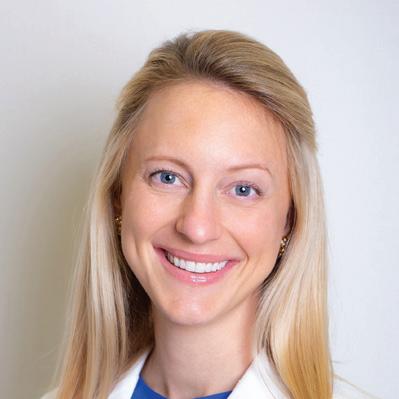
years, and during this time has served as a Board member of the Alabama Dermatology Society and as a member of the American Academy of Dermatology and the Women’s Dermatologic Society.

We bring you easy access to high-quality care by boardcertified specialists and a host of compassionate sta . No parking fees. Close to home.


With the nation’s largest healthcare law practice according to Modern Healthcare, Holland & Knight has more than 400 experienced attorneys covering virtually every segment of the healthcare industry, from transactional matters, regulatory compliance and real estate to litigation, government enforcement and public policy issues.
Our dedicated healthcare attorneys and professionals – in Birmingham and throughout the country – have the insight, experience, depth and resources to help promote and protect your interests.